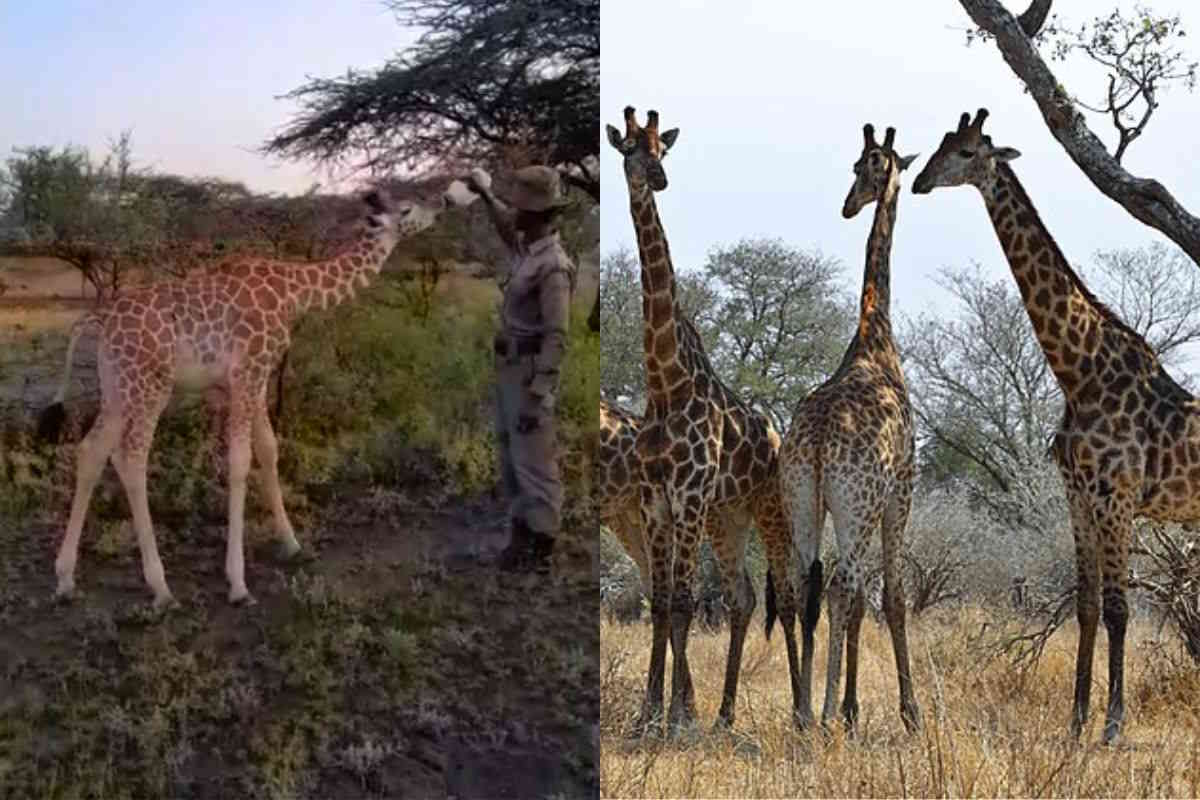A giraffe is fed by a ranger. The image, of infinite tenderness, also reminds us of all the dangers that this species faces in its natural habitat, a territory in which the struggle for survival is extreme. World Giraffe Day is celebrated on 21 June, an opportunity to understand and raise awareness about the conservation of these iconic animals

@Save Giraffes Now – Wikimedia Commons
Small and defenseless, a baby giraffe is growing up under the careful watch of rangers and veterinarians, amidst an increasingly treacherous habitat. Bottle-fed, this young giraffe eagerly anticipates a future where it can look down upon the world from towering heights.
This heartwarming image comes from Africa, the homeland of these magnificent herbivores. The team at Save Giraffes Now is dedicated to caring for this young one and its companions, striving to save the species from a grim fate.
🦒✨ Look at the adorable calf getting bottled fed by one of the dedicated rangers at Ruko. This little bundle of joy is growing strong and healthy, thanks to your amazing support! 🍼 But, our work is not done! It costs $185 per week to keep this baby well-fed with formula, and we need your help to continue providing the care this little giraffe deserves. Every donation counts and brings us closer to ensuring a bright future for this precious calf! 🌟🌿 Donate today at savegiraffesnow.org/donate!
Posted by Save Giraffes Now on Wednesday, June 19, 2024
Abandoned and orphaned
Sometimes, mother giraffes reject their calves, leaving the offspring to be closely monitored by NGO experts. These calves will rejoin their herds in Kenya, Niger, and Zambia as soon as they get the all-clear from veterinarians.
Other times, poachers kill adult giraffes, leaving behind young orphans. However, poaching is not the sole reason for the decline in giraffe populations.
Look how much our little giraffe has grown! 🦒💕 Here’s a sweet snapshot of our baby giraffe with our dedicated team member Aggrey. Watching this cutie thrive brings us so much joy!
Posted by Save Giraffes Now on Tuesday, June 4, 2024
Dire threats to survival
Giraffes are one of the species at serious risk of extinction. Currently, only about 117,000 giraffes remain in the savannas and woodlands. Of the four species—northern giraffe, reticulated giraffe, Masai giraffe, and southern giraffe—the first three are critically endangered.
Major threats include habitat fragmentation, human activities and their impact on ecological changes, climate change effects such as drought, and illegal hunting.
Global awareness and conservation efforts
To raise global awareness about the threats facing giraffes and inform about conservation measures, June 21 has been designated as World Giraffe Day.
Efforts to combat poaching at every level, territorial monitoring, trap removal, village education to reduce human-wildlife conflict, and studies of local populations are among the actions taken by institutes and associations.
Organizations like Save Giraffes Now, the Giraffe Conservation Foundation, Save the Giraffes, WWF, and others operating on the continent are committed to ensuring a future for giraffes through large-scale cooperation.
Encouraging progress
It’s not easy, but recent years have shown positive trends. Scientific evidence indicates that between 2015 and 2021, the giraffe population increased by 20% due to growth in certain areas and more accurate censuses.
These figures should motivate us to continue fighting for giraffes. It’s a challenge that transcends national borders, a mission to which we can contribute in many ways—by supporting the work of NGOs, advocating against the hunting trophy market, and raising awareness.
Sources: Save Giraffes Now/Facebook – WWF
